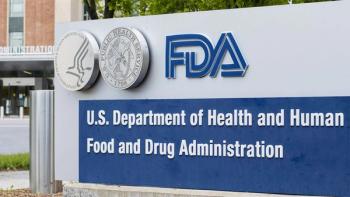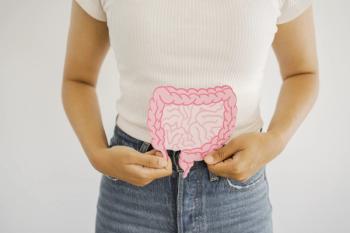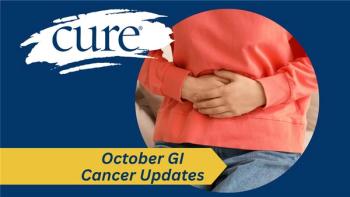
- 2020 Rare Cancers Special Issue
- Volume 8
Anal Cancer: Locking Out an Intruder
Key Takeaways
- Anal cancer incidence and mortality are rising, with HPV as the primary cause, highlighting the need for preventive measures.
- The HPV vaccine, effective against multiple cancer-causing strains, remains underutilized due to misconceptions and hesitancy.
To halt the rise of anal cancer, everyone eligible needs to be vaccinated against HPV, which causes most cases of the disease.
During the two years after Nelda Blair turned 50, her gynecologist urged her to get her first colonoscopy, and she finally agreed. After the test, her gastroenterologist told her she had a rare tumor on her anus and referred her to an oncologist.
Blair and her gynecologist had thought the growth was a hemorrhoid, even though it wasn’t red or painful. It turned out to be stage 2 anal cancer, most likely caused by the human papillomavirus (HPV).
“I had no symptoms,” says Blair, a married stepmother and lawyer who lives and works in The Woodlands, a Houston suburb. “When (the gastroenterologist) went to do the colonoscopy, the tumor was right there. It’s not hard to see. My gynecologist didn’t know what it was.”
Although anal cancer is rare, the number of people developing and dying from it has steadily increased since 2001, according to a study published in November 2019 in the Journal of the National Cancer Institute. From 2001 to 2015, the incidence of anal cancer, or squamous cell carcinoma of the anus, rose by 2.7% per year, making it one of the nation’s fastest-growing cancers.
Over the years, the disease has also become more likely to be diagnosed at later stages, when it is more difficult to cure. If the cancer is caught early, survival is likely; nearly half of patients receive their diagnoses at this point, and 82% are alive five years later. For those with metastatic disease, which has spread further into the body, the five-year survival rate is 32%.
Because a higher proportion of patients are receiving diagnoses of advanced disease, the associated death rate jumped by 3.1% in each year of the study, the authors found.
The main culprit behind this trend is HPV, a sexually transmitted infection that causes more than 91% of anal cancers. Nearly all adults encounter HPV at some point; it can spread through skin-to-skin contact, including deep kissing, oral sex, hand-to-genital contact and intercourse.
When the anal cancers now being tracked began to develop, years or even decades before they were diagnosed, little could be done about the HPV that sparked them. Now, however, there is a way to stem the tide for future generations.
This opportunity lies in the HPV vaccine, which can prevent anal, cervical, oropharyngeal (throat, mouth or tongue), vulvar, vaginal and penile cancers throughout life in the eligible children and young adults who receive it.
PROTECTION IN A SYRINGE
Anal cancer became preventable when the Food and Drug Administration (FDA) approved the HPV vaccine Gardasil in 2006. The goal in giving the vaccine is to inoculate people against HPV before they are exposed to it. Initially, the Advisory Committee on Immunization Practices (ACIP) within the Centers for Disease Control and Prevention (CDC) recommended the vaccine for girls and women ages 9 to 26, but in 2011 it added boys and men ages 9 to 26. Although young adults may already have encountered some strains of HPV, the vaccine can help them avoid others.
The inoculation program evolved further in 2014, when the FDA replaced the vaccine with Gardasil 9, which protects against the same four strains as the original, plus another five. Although the HPV vaccine was approved for use in adults up to age 45 in June 2019, it’s not routinely recommended for those older than 26; the ACIP recommends that patients consult their doctors to determine if vaccination is likely to be beneficial. Possible candidates in the older age group would be those who have not had sex or are recently widowed or divorced, and thus may not previously have contracted HPV, Dr. Mona Saraiya, an epidemiologist with the CDC, says.
Although there are more than 100 strains of HPV, Gardasil 9 specifically prevents infection from the strains that cause most of the cancers — HPV-16, HPV-18 and five others, as well as two known to cause 90% of genital warts.
The HPV vaccine has been administered to millions of patients and proved safe and effective, Saraiya says. New data show that in the youngest populations, genital warts and precancerous conditions have decreased, she says.
Study findings show that HPV vaccinations provide lasting protection when given prior to HPV infection, reduce precancerous lesions and likely result in fewer cancers. If vaccination rates reached the federal government’s goal uptake of 80% of children by age 13, the incidence of anal and cervical cancers could be reduced enormously, and cancer-causing strains of HPV would virtually disappear due to herd immunity, meaning that so many people would be vaccinated that it would be difficult for HPV to infect the unvaccinated.
Yet, in the United States, only about 51% of those eligible are up to date with their HPV vaccines. Among the primary reasons cited for the relatively low level: When the vaccine was first introduced, pediatricians emphasized its role in preventing a sexually transmitted infection. Some parents feared that this would give their children a false sense of protection and encourage promiscuity. Multiple studies have disproved that concern.
Some parents questioned the vaccine’s safety. “Anti-vaxxers are very passionate about their position, but it’s based on no science,” says Dr. Joel Palefsky, a professor of medicine and an infectious disease specialist at the University of California, San Francisco. “We feel they cause a lot of harm by influencing others.”
Other studies showed that, instead of presenting the shot as one more routine childhood vaccine to be given during the annual physical, doctors introduced it as something parents could think about and return for later.
Educating physicians and parents about cancer- prevention aspects for girls and boys has improved vaccination rates, especially among Blacks and Hispanics, says Sherrie Flynt Wallington, an assistant professor of health disparities and oncology at The George Washington University School of Nursing at the Milken Institute School of Public Health. Although these two populations have high rates of seeking out vaccines, their rates for completing the HPV two- or-three- shot series are still low, she says. Vaccination rates remain low among whites and in rural areas.
“We need to do more work educating the physicians about the complete story of HPV from a biological standpoint (and why they need to be) holding those conversations with parents,” Wallington says. “You’re seeing a shift now, from parental hesitancy to provider hesitancy.”
In the United Kingdom and Australia, where children get vaccines at school, 90% of the eligible population is vaccinated.
In the U.S., four jurisdictions require that students receive the HPV vaccine to attend school: Rhode Island, Virginia, the District of Columbia and Puerto Rico. Virginia requires the vaccine only for girls.
Do mandates work? The CDC doesn’t take a position, Saraiya says. According to the National HPV Vaccination Roundtable, a coalition of 70 organizations, early studies found that these orders do not promote increased vaccination uptake because parents are able to opt out.
“Parents don’t think the government should usurp decisions made about their children. What really works is educating parents so they can make an informed decision and equipping providers with the knowledge and skills to make strong HPV recommendations. Providers are the key,” Wallington says.
One recent study credited Rhode Island’s school-entry requirement with an 11% increase in HPV vaccination rates for boys but not girls. Washington, D.C., has a 78% HPV vaccination rate and Virginia has a 59% rate, but the Roundtable reports that it’s unknown whether this uptake is linked to school-entry mandates.
THE HPV-CANCER CONNECTION
The HPV connection explains a lot about some of the groups most affected by the rise in anal cancer — people who are immunocompromised and less likely to be able to fight off HPV.
Those with HIV or AIDS are at higher risk of developing anal cancer, and, in a related statistic, Black men born in the mid-1980s receive five times as many diagnoses as black men born in the mid-1940s.
“Our speculation was that the rise in incidence (in young Black men) was due to the fact that HIV infections are higher,” says Ashish Deshmukh, assistant professor of medicine at The University of Texas Health School of Public Health in Houston and lead author of the Journal of the National Cancer Institute article on the rising incidence of anal cancer. “It’s very hard to speculate why it’s increasing in women,” he added.
Women may be more at risk than men because of anatomical differences and the “HPV field effect,” Saraiya says: If the virus is in or around the cervix, it can easily spread to the anus.
Others at risk of anal cancer include women who have had an irregular Pap test or cervical or vulvar cancer, people who have had organ transplants and those with autoimmune diseases, says Dr. Van Morris, assistant professor of gastrointestinal medical oncology at The University of Texas MD Anderson Cancer Center (MD Anderson) in Houston. Middle-aged and elderly people also are experiencing a greater incidence of anal cancer, Deshmukh says. The rate of increase has been smaller for Hispanic people, and there were very few cases in Asian people, Deshmukh says.
The average age of those diagnosed with anal cancer is 62. Each year in the United States, an estimated 8,590 adults — 5,900 women and 2,690 men — will receive the diagnosis.
SCANT GUIDANCE FOR SCREENING
Anal cancer is highly curable when caught early, but there are no official guidelines for screening, says Dr. James M. Cleary, a gastrointestinal medical oncologist at Dana- Farber Cancer Institute. Experts recommend screening for those who are HIV positive and for men who have sex with men, who also face a higher risk of anal cancer, making up 10% of the population that has the disease. However, there’s disagreement within the medical community about screening men who have sex with men, partly because demand would exceed the supply of doctors who know how to perform the screening, say Morris and Palefsky.
The current screening practice isn’t great, Morris says: “There’s a need for increased vigilance among providers.”
To improve screening, the ongoing NCI-funded ANCHOR clinical trial involving HIV-positive men and women ages 35 and older seeks to find an anal cancer equivalent of the Pap test, which detects cervical cancer and has slashed deaths from the disease. In this test, doctors swab the anal lining and look at the cells under a microscope for signs of cancer or precancerous cellular changes.
In the study taking place at 17 sites across the country, people are screened for precancerous anal lesions. Those with lesions are enrolled and randomized to either receive treatment or be monitored every six months.
Although imperfect, Palefsky would like another method known as the digital anal rectal exam (DARE) to become a routine part of the annual physical for men and women. The more common digital rectal exam (DRE) is designed to look for tumors in the rectum, which is different from the anus. In both tests, doctors use their fingers to feel for lumps.
“We found that practitioners were not paying that much attention to the anus. We want them to feel more carefully for tumors in the anus,” Palefsky says. “If someone does it and feels something hard, the earlier you catch an anal cancer, the better the survival.” One condition that might be found is anal intraepithelial neoplasia, or precancerous lesions. There is no one standard of care for these lesions, which can be burned away with a low-voltage probe, cut out surgically or treated with a cancer-fighting topical cream version of the drug imiquimod or fluorouracil.
Gastrointestinal oncologists advise people to know the signs of anal cancer and see a physician as soon as they experience symptoms. These include a new growth, thinning of stools, incomplete evacuation, rectal or anal pain or itching, rectal bleeding, or discomfort during a bowel movement.
THE EARLIER, THE BETTER FOR TREATMENT
In 2004, Michael McKnight, 64, of Scottsdale, Arizona, noticed anal pain and bowel movement discomfort and changes. A few weeks later he saw a doctor, who told him it was probably an anal fissure and would heal itself. McKnight, who is gay and married, knew it wasn’t that simple. He called his primary care advanced practice registered nurse, who referred him to a proctologist. The proctologist examined the area with a scope and did a biopsy.
“It came back as anal cancer, stage 0,” says McKnight, who is retired after selling his advertising and marketing business. He underwent five surgeries within a month to remove the tumor and get margins that showed no sign of cancer, he says. He continued to go for follow-up visits, and in 2010, he received another diagnosis of anal cancer, classified as stage 2. The surgeon removed the growth, and McKnight received simultaneous chemotherapy and radiation treatment, called chemoradiation.
In fact, chemoradiation — sometimes after surgery to remove cancerous tissue — is the standard of care for anal cancer in stages 1 through 3. Most cancer treat- ment centers use a combination of two chemotherapy drugs: 5-fluorouracil and mitomycin C, Morris says. His institution uses the chemotherapy cisplatin instead of mitomycin C: “We believe it’s equally effective and less toxic for patients,” he says.
If chemoradiation doesn’t rid the patient of cancer permanently, abdominal perineal resection, which involves removing the whole rectum, can be done, Cleary says. Although the surgical procedure saves lives, it results in the need for a colostomy.
If anal cancer spreads to areas such as the lungs, bones, liver or brain, it can’t be cured, but doctors can try to halt or slow the progression with 5-fluorouracil and cisplatin and sometimes radiation. Surgery also might be an option.
Until recently, there weren’t many options for those with metastatic, or stage 4, anal cancer. An MD Anderson team led a study of immunotherapy treatments offered to patients at 10 U.S. academic centers. Early results involving 37 patients showed that 24% responded favorably to treatment with Opdivo (nivolumab), an inhibitor of the protein PD-1 that activates the immune system to attack tumors, according to findings published in The Lancet Oncology.
“We’re extremely excited about this, but we still have a lot of work to do,” says Cleary, who is involved with this research. “The group that was being ignored was the metastatic patients. Fortunately, that’s changed with the PD-1 immunotherapy. ... We’re trying to figure out what to do with the 80% of patients in whom it doesn’t work.”
When anal cancer is caught early, most, like Blair and McKnight, return to their normal lives. “Don’t stop your life and do cancer,” says Blair, who continued to work through her treatment, walking around with a chemotherapy bag tucked into a black-fringed, leopard-print purse.
“My new normal is different,” she says, because her colon doesn’t work like it did before. “I no longer gain weight. Nothing stays in me very long.”
But Blair sees the silver lining: “I’m a big chocolate lover. Now I can eat a chocolate chip cookie every day if I want to.”
Articles in this issue
over 5 years ago
With Rare Cancers, Progress Starts With the Patientsover 5 years ago
Genetics Remains Paramount for Moving Rare Cancers Forwardover 5 years ago
Appendix Cancer: An Elusive Diagnosisover 5 years ago
Salivary Gland Cancer: As Rare As It Is Diverseover 5 years ago
Laughing in the Face of Cancer and Deathover 5 years ago
Laughing In The Face of A Brain Tumorover 5 years ago
Can Collaboration Help Find A Cure for Cholangiocarcinoma?




